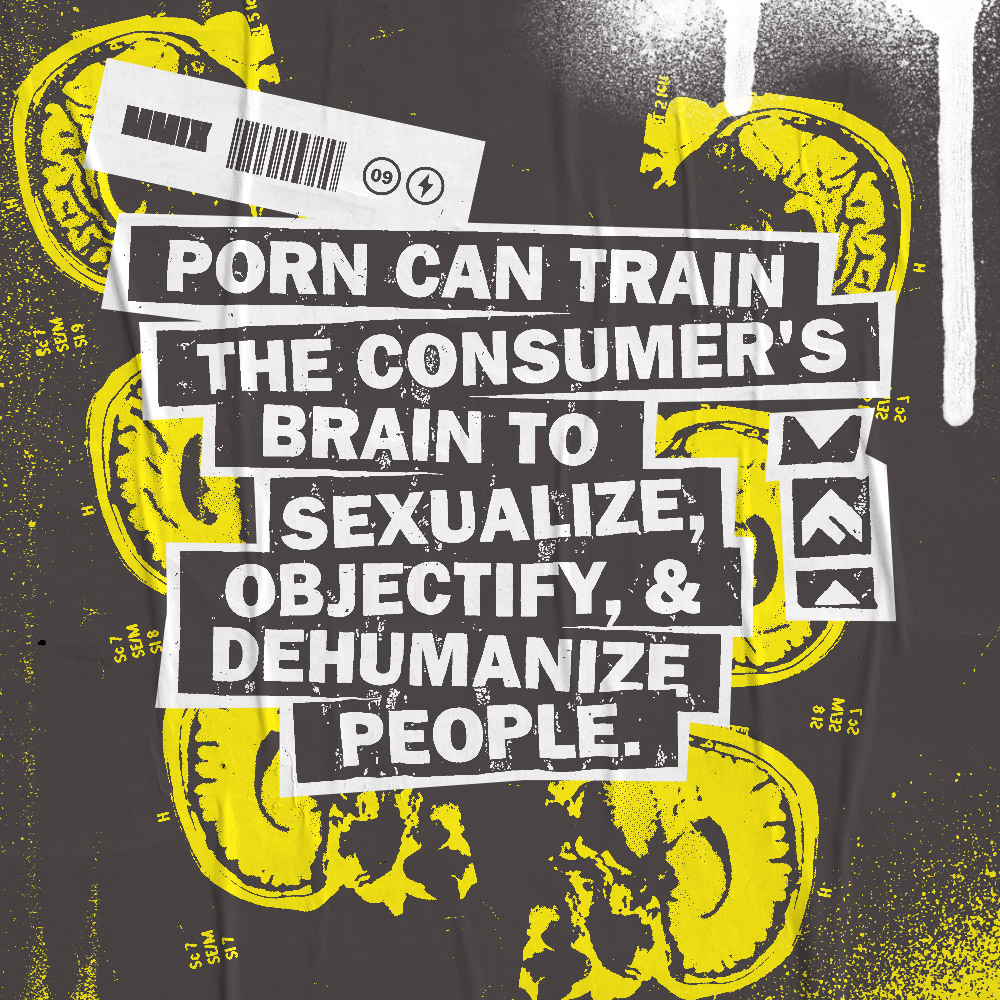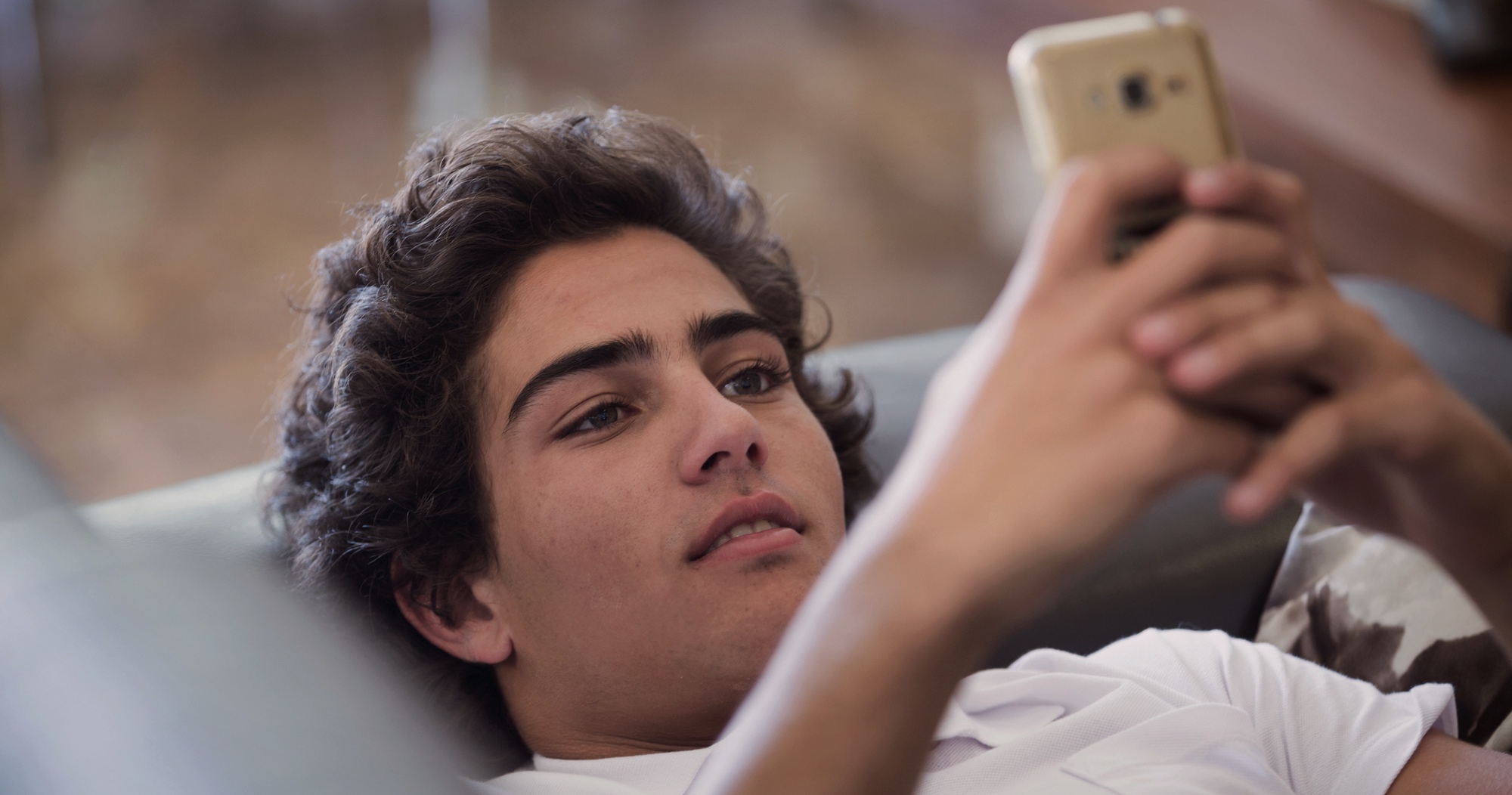What would you do if you found out you were being robbed, or your home was being burglarized? How would you feel knowing something valuable to you was being stolen by someone who had no right to take it?
If you think about it, fear of theft is practically ingrained into the fiber of our culture—simply look at how many home security systems exist and the lengths we go to in order to protect our stuff. So what if we told you that something deeply personal and integral to you likely already has—at least in part—been stolen from you, or someone has attempted to take it?
The porn industry’s sexuality heist
Porn promises a unique, personal experience with any and every performer on screen, but this couldn’t be further from reality.
The porn industry and the culture it has created thrives in taking and shaping the unique sexuality of consumers and replacing it with a reproduced, synthetic version that it can capitalize on again and again.
Before even consuming porn, many people have been exposed to a world that has been shaped by it. After porn became easily accessible through the internet, our culture adapted to a growing desire for airbrushed, visual representations of exaggerated sex. [1] Anyone can now see over-sexualized advertisements on the regular and hear things that tell them what sexuality should look like, no matter how degrading or objectifying it may be.
Related: Manufactured “Love”: Today’s Porn Is All About Selling Synthetic Intimacy
Often, this generation has been exposed to porn-shaped sexuality through jokes and stories in adolescence, whether through friends or what’s on TV and in music. Before exposure to porn itself, let alone exposure to a unique and personal sexual encounter, culture has tried to rob this generation and the next of defining individuality and personal sexual experience by defining what should and shouldn’t happen during sexual encounters, and what should and shouldn’t be liked.
Pornified understanding of sex even before personal encounters
Not sure what we’re talking about? Consider that between 1998 and 2005, the 20 most popular TV shows among teens increased sexual content by 70%, [2] while video games and children’s toys have become more sexualized over time, [3] showing signs of a world that has been influenced by a sex-obsessed culture and the wide availability and mass consumption of porn.
Not to mention that the average age of exposure to porn is generally thought to be 11 years old, though even earlier exposure is common. Also, 2016 research tells us that young millennials and teenagers are consuming porn more than any other generation, making millennials and the post-millennial generation, Gen-Z, likely the most porn-saturated generations to exist.
Related: 5 Lessons Porn Is Teaching Our Generation About Sex
So if we are the most porn-saturated generations to ever exist, what does that do to our collective sexual template and understanding of sex?
Sexual desires are varied from person to person; like fingerprints, no two sexualities and sexual preferences are exactly the same, as no two people are exactly the same. Makes sense, right? The problem with porn is because it has the power to shape a consumer’s sexual tastes and preferences, and much of it is produced to be as violent and degrading as possible, it tells the consumer what should and shouldn’t be liked as well as what a partner should do or enjoy.
The evolution of sexual tastes
Let’s take it to the facts. Research has shown that men’s sexual tastes become homogenized through porn consumption. [4] So whether someone has actually seen porn or only lives in a culture that is immersed in its influence, porn can easily remove individuality from sexual desire and shift the focus from connection to performance and degradation. This change happens without the consumer’s consent or even knowledge of what’s happening.
This fact is made worse when you realize that, in one study of popular scenes, 88% of porn contained some form of physical violence, often against women, [5] and consumers’ increased porn consumption leads to seeking out increasingly shocking and extreme content that pushes boundaries even further. [6]
Related: When You Watch Porn, Who Is It Actually Hurting?
It’s no secret that porn today is more graphic than ever before, where today’s softcore pornography is yesterday’s hardcore pornography, [7] and consumers’ tastes only seem to be getting more extreme in nature. [8] Is this the sort of environment we want our sexuality to be submerged in, where fake orgasms, violence, pain, and degradation thrive?
Luckily, the news isn’t all a downer. Though a consumer’s sexuality can be shaped by porn, there is hope for healing. By choosing to ditch porn, over time, a consumer’s brain stops making the positive connections they use to have with porn and their sexual template can begin to heal and unlearn what porn taught them. While it’s not possible to un-do porn exposure and erase every image from memory, a transformation is more than possible.
Un-learning what porn teaches
For a moment, imagine a world in which you entered into your first sexual encounter with no expectations or unspoken script from either party, and desires and tastes could be shaped for themselves. Nice, right?
Because of porn, this phenomenon is, unfortunately, growing more and rare. Even if you yourself haven’t chosen to consume porn, we live in a culture that’s immersed in it, where pornography’s reach goes far beyond its direct consumers and screens.
Of course, if you have been influenced by porn in one way or another, you are absolutely still unique and still deserving of an awesome relationship. Even still, watching isn’t worth it, and the way to be more fully true to you and your own sexual tastes is to ditch porn and the culture surrounding it. Don’t let what is yours be taken away from you by an industry that doesn’t care about you. You deserve better than what porn steals and replaces sexual tastes with. Are you with us?

Citations
[1] Caro, M. (2004). The New Skin Trade. Chicago Tribune, September 19.
[2] Kunkel, D., Eyal, K., Finnerty, K., Biely, E., and Donnerstein, E. (2005). Sex on TV 4. Menlo Park, CA: The Henry J. Kaiser Family Foundation.
[3] Peter, J. and Valkenburg, P. M. (2007). Adolescents’ Exposure to a Sexualized Media Environment and Their Notions of Women as Sex Objects. Sex Roles 56,(5-6), doi:381–95.10.1007/s11199-006-9176-y
[4] Boyle, Karen. (2010). Everyday Pornography. London: Routledge.
[5] Bridges, A. J., Wosnitzer, R., Scharrer, E., Sun, C., & Liberman, R. (2010). Aggression and sexual behavior in best-selling pornography videos: a content analysis update. Violence Against Women, 16(10), 1065-1085.
[6] Park, B. Y., et al. (2016). Is Internet Pornography Causing Sexual Dysfunctions? A Review with Clinical Reports. Behavioral Sciences, 6, 17. doi:10.3390/bs6030017; Negash, S., Van Ness Sheppard, N., Lambert, N. M., & Fincham, F. D. (2016). Trading Later Rewards for Current Pleasure: Pornography Consumption and Delay Discounting. The Journal of Sex Research, 53(6), 698-700. doi:10.1080/00224499.2015.1025123; Pitchers, K. K., et al. (2013). Natural and Drug Rewards Act on Common Neural Plasticity Mechanisms with DeltaFosB as a Key Mediator. Journal of Neuroscience, 33(8), 3434-3442. doi:10.1523/JNEUROSCI.4881-12.2013; Layden, M. A. (2010). Pornography and Violence: A New look at the Research. In J. Stoner and D. Hughes (Eds.) The Social Costs of Pornography: A Collection of Papers (pp. 57–68). Princeton, NJ: Witherspoon Institute; Angres, D. H., & Bettinardi-Angres, K. (2008). The Disease of Addiction: Origins, Treatment, and Recovery. Disease-a-Month, 54, 696–721. doi:10.1016/j.disamonth.2008.07.002; Doidge, N. (2007). The Brain That Changes Itself. (105) New York: Penguin Books; Paul, P. (2007). Paul, P. (2007). Pornified: How Pornography Is Transforming Our Lives, Our Relationships, and Our Families. (75) New York: Henry Hold and Co.
[7] Doidge, N. (2007). The Brain That Changes Itself. New York: Penguin Books.
[8] DeKeseredy, W. (2015). Critical Criminological Understandings of Adult Pornography and Women Abuse: New Progressive Directions in Research and Theory. International Journal for Crime, Justice, and Social Democracy, 4(4) 4-21. doi:10.5204/ijcjsd.v4i4.184
Your Support Matters Now More Than Ever
Most kids today are exposed to porn by the age of 12. By the time they’re teenagers, 75% of boys and 70% of girls have already viewed itRobb, M.B., & Mann, S. (2023). Teens and pornography. San Francisco, CA: Common Sense.Copy —often before they’ve had a single healthy conversation about it.
Even more concerning: over half of boys and nearly 40% of girls believe porn is a realistic depiction of sexMartellozzo, E., Monaghan, A., Adler, J. R., Davidson, J., Leyva, R., & Horvath, M. A. H. (2016). “I wasn’t sure it was normal to watch it”: A quantitative and qualitative examination of the impact of online pornography on the values, attitudes, beliefs and behaviours of children and young people. Middlesex University, NSPCC, & Office of the Children’s Commissioner.Copy . And among teens who have seen porn, more than 79% of teens use it to learn how to have sexRobb, M.B., & Mann, S. (2023). Teens and pornography. San Francisco, CA: Common Sense.Copy . That means millions of young people are getting sex ed from violent, degrading content, which becomes their baseline understanding of intimacy. Out of the most popular porn, 33%-88% of videos contain physical aggression and nonconsensual violence-related themesFritz, N., Malic, V., Paul, B., & Zhou, Y. (2020). A descriptive analysis of the types, targets, and relative frequency of aggression in mainstream pornography. Archives of Sexual Behavior, 49(8), 3041-3053. doi:10.1007/s10508-020-01773-0Copy Bridges et al., 2010, “Aggression and Sexual Behavior in Best-Selling Pornography Videos: A Content Analysis,” Violence Against Women.Copy .
From increasing rates of loneliness, depression, and self-doubt, to distorted views of sex, reduced relationship satisfaction, and riskier sexual behavior among teens, porn is impacting individuals, relationships, and society worldwideFight the New Drug. (2024, May). Get the Facts (Series of web articles). Fight the New Drug.Copy .
This is why Fight the New Drug exists—but we can’t do it without you.
Your donation directly fuels the creation of new educational resources, including our awareness-raising videos, podcasts, research-driven articles, engaging school presentations, and digital tools that reach youth where they are: online and in school. It equips individuals, parents, educators, and youth with trustworthy resources to start the conversation.
Will you join us? We’re grateful for whatever you can give—but a recurring donation makes the biggest difference. Every dollar directly supports our vital work, and every individual we reach decreases sexual exploitation. Let’s fight for real love:





